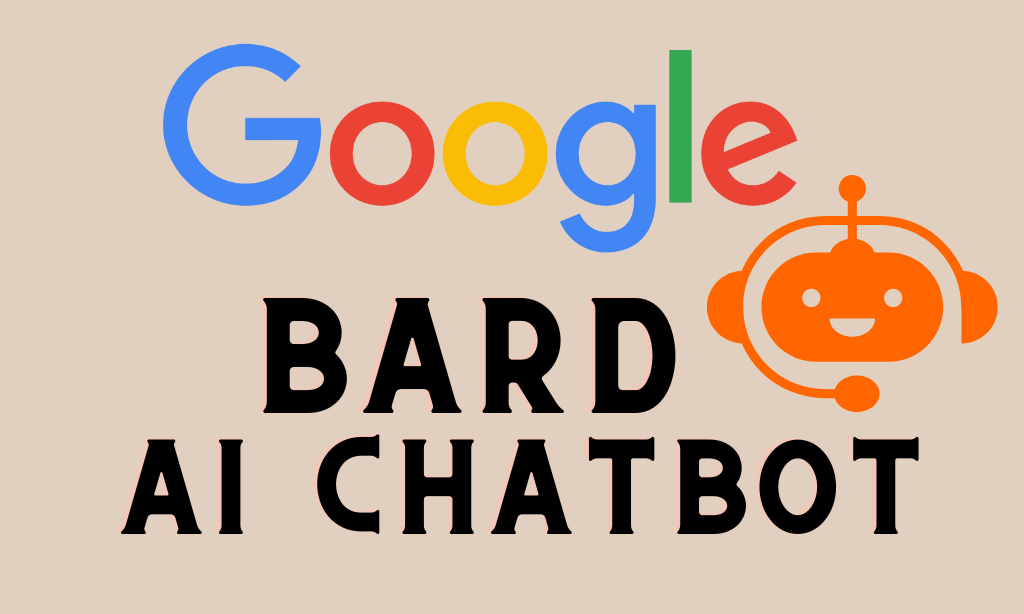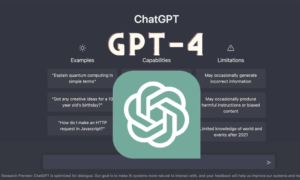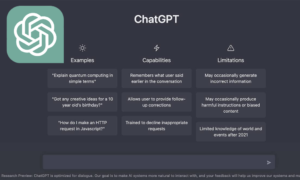Bard, a research-driven large language model (LLM), is powered by an optimized and lightweight version of LaMDA. It is designed to be updated with more advanced models over time, continually enhancing its capabilities. Bard is based on Google’s expertise in delivering high-quality information and operates as a prediction engine. When prompted, the LLM generates a response by selecting words in a sequential manner, factoring in flexibility to foster creative responses. As more people interact with Bard, the LLM improves its ability to predict helpful responses.
Despite the promising nature of LLM technology, it has its shortcomings. LLMs learn from a wide array of information sources, which may include real-world biases and stereotypes, occasionally resulting in biased outputs. Additionally, LLMs can provide inaccurate, misleading, or false information while maintaining an appearance of confidence. For example, Bard once offered convincing suggestions for easy indoor plants but incorrectly identified the scientific name for the ZZ plant.
Dive into this captivating article as we unravel the mysteries of Google Bard AI by answering +50 intriguing questions that will leave you amazed!
What is Google’s Bard AI?
Google’s Bard AI is a generative and conversational chatbot similar to ChatGPT and Bing Chat. It is designed to help with creative tasks, explain complex topics, and distill information from various sources on the internet. Bard is based on Google’s LaMDA language model, which is different from ChatGPT’s GPT-3.5.
How does Google Bard AI work?
Google Bard works using the LaMDA language model, which is trained on text samples and optimized to predict words and sentences, resulting in human-like dialogue. LaMDA can search the internet in real-time to augment its responses, allowing it to provide up-to-date information.
What is LaMDA?
LaMDA (Language Model for Dialogue Applications) is a machine learning model built on the open-source Transformer-based neural network architecture. It is trained on 1.56 trillion words and is specifically designed for conversational tasks. LaMDA has three key objectives: quality, safety, and groundedness.
How can I use Google Bard AI?
As of now, Google Bard AI is available to a selected group of trusted testers. Google plans to open up access to the general public in the coming weeks, but there is no concrete timeline. When released, Bard may be integrated into Google Search and other Google products.
How does Google Bard AI compare to ChatGPT?
Google Bard AI has access to live information on the internet, while ChatGPT’s knowledge is limited to its training data collected prior to 2021. Bard may also be integrated into various Google products, potentially allowing voice interaction. Additionally, Bard uses Google’s LaMDA model, while ChatGPT uses the GPT-3.5 model. However, Google Bard AI may deliver shorter responses compared to ChatGPT.
What potential integrations could Google Bard offer?
Google Bard could be integrated into various Google products, such as Android, Chrome OS, Gmail, Google Docs, and the Chrome web browser. These integrations may enable users to ask Bard to summarize websites, write documents directly in apps, or even interact with the chatbot using their voice.
How does Google Bard AI handle factual accuracy and misinformation?
Google aims to improve factual accuracy by giving LaMDA the ability to seek information from external sources, allowing it to search the internet in real time. However, as with any large language model, biases in the training data and the possibility of generating incorrect information are concerns that need to be addressed.
What is the Transformer architecture?
The Transformer architecture is a type of neural network used for various natural languages processing tasks, such as translation and text generation. It has been widely adopted for building large language models like LaMDA and GPT-3.5 due to its ability to handle long-range dependencies and parallelize computations efficiently.
Will Google Bard AI be free or paid?
While Google Bard AI is free for trusted testers during its initial release, it is unclear whether it will remain free or adopt a paid plan similar to ChatGPT Plus when it becomes available to the general public.
How does Google plan to scale the computational costs of Bard AI?
Google may initially restrict access to Bard AI to a limited number of users, helping to scale computational costs over time. As Bard’s machine learning-based responses require more resources than regular search queries, limiting its availability and usage could help manage expenses during the initial stages of its release.
What is the expected timeline for Google Bard AI’s public release?
There is no specific timeline for Google Bard AI’s public release. Google plans to open access to the general public in the coming weeks, but the exact date remains uncertain. Further updates will likely be announced by Google as the launch approaches.
How does Google Bard AI handle open-ended questions?
Google Bard AI is designed to handle open-ended questions by leveraging the LaMDA language model, which generates contextually relevant and logically sound responses. It can condense information from multiple web pages into a few paragraphs to provide comprehensive answers to complex questions.
Are there any limitations to Google Bard AI?
As with any AI chatbot, Google Bard AI has certain limitations. Factual accuracy and biases in the training data are concerns that need to be addressed to minimize the spread of misinformation. Additionally, since Bard’s language model is different from ChatGPT’s, its performance in comparison to other chatbots remains to be seen after its release.
Will Google Bard AI be able to understand multiple languages?
While the initial release of Google Bard AI may primarily focus on English, it is expected that Google will eventually expand the chatbot’s language capabilities to cover multiple languages, similar to other Google products and services that support multilingual interactions.
Can Google Bard AI help with creative writing tasks?
Yes, Google Bard AI is designed to help with creative tasks by generating human-like dialogue and providing contextually relevant information. Users can leverage the chatbot to generate ideas, write content, or even brainstorm new concepts, making it a valuable tool for creative writing and other artistic endeavors.
What are the primary differences between Google Bard AI and ChatGPT?
Some key differences between Google Bard AI and ChatGPT include their underlying language models (LaMDA vs. GPT-3.5), access to real-time information (Bard can search the internet, while ChatGPT relies on pre-2021 data), and potential integrations with other products and services (Google Bard may integrate with various Google products).
What are the similarities between Google Bard AI and ChatGPT?
Both Google Bard AI and ChatGPT are AI-powered chatbots designed to engage in open-ended conversations and provide contextually relevant responses. They are based on large language models and leverage Transformer-based neural network architectures to generate human-like dialogue.
Can Google Bard AI be used in educational settings?
While Google Bard AI is designed to provide information and answer questions, its potential use in educational settings depends on its accuracy, reliability, and ability to handle various subjects. If Google Bard can offer accurate information and support various educational topics, it could potentially be used as a learning aid or to help students with their assignments.
What is the impact of Google Bard AI on the search engine market?
The introduction of Google Bard AI could transform Google from a traditional search engine into a more interactive and conversational virtual assistant. As users increasingly adopt conversational AI tools, other search engines may follow suit, leading to a shift in the search engine landscape and increased competition among AI-powered chatbots.
How does Google Bard AI’s lightweight model version affect its performance?
The lightweight model version of LaMDA used in Google Bard AI is designed to consume less computing power, allowing it to scale to more users and gather more feedback for improvement. While this may result in some trade-offs in terms of response quality or speed, Google aims to balance performance and resource consumption to deliver a satisfactory user experience.
Can Google Bard AI be used for customer support?
While not specifically designed for customer support, Google Bard AI could potentially be adapted to handle customer inquiries and provide assistance in a conversational manner. However, its effectiveness in this role will depend on its ability to understand customer needs and provide accurate and relevant information.
Will Google Bard AI be available on multiple platforms?
Though Google hasn’t shared specific details about platform availability, it’s likely that Google Bard AI will be accessible through various devices and platforms, including Android, iOS, and web browsers, as Google typically aims to make its products and services widely available.
Can Google Bard AI be used for content summarization?
Yes, Google Bard AI is designed to condense information from multiple sources, which makes it suitable for content summarization tasks. Users could potentially leverage the chatbot to summarize web pages, articles, or other text-based content.
How will user privacy be maintained while using Google Bard AI?
Although Google has not released specific details regarding privacy and data handling for Bard AI, the company is expected to follow standard privacy practices, including data encryption, anonymization, and adherence to regional data protection regulations.
Can Google Bard AI be used for code generation or programming help?
While it’s unclear if Google Bard AI will specifically support code generation or programming assistance, its ability to generate contextually relevant information could potentially be helpful for developers seeking guidance on programming concepts or troubleshooting issues. The actual extent of support for code-related tasks will depend on the chatbot’s capabilities upon release.
How does Google Bard AI handle biases in the training data?
As with any AI model, biases can be present in the training data for Google Bard AI. Google is likely to implement strategies to mitigate these biases and ensure fair and accurate responses. The effectiveness of these strategies will be determined once the chatbot is available for public use.
How does Google Bard AI learn from user interactions?
Google Bard AI may use user interactions to gather feedback and improve its performance over time. By analyzing user inputs and responses, the chatbot can refine its understanding of various topics and enhance its conversational abilities.
How will Google Bard AI affect the AI chatbot market?
The introduction of Google Bard AI may increase competition in the AI chatbot market, pushing developers to create more advanced and user-friendly chatbots. As major players like Google and OpenAI develop increasingly sophisticated conversational agents, the market may experience accelerated innovation and growth.
Can Google Bard AI be customized for specific industries or applications?
Although no specific details have been provided regarding customization options for Google Bard AI, it’s possible that future updates or APIs could allow developers to tailor the chatbot for specific industries or applications, depending on its capabilities and the needs of the target audience.
How will Google Bard AI handle controversial or inappropriate content?
Google is expected to implement content moderation and filtering mechanisms to prevent the generation and dissemination of controversial or inappropriate content. These measures will help ensure that Google Bard AI provides safe and reliable information to its users.
Can Google Bard AI be integrated with third-party applications?
While specific details about third-party integrations for Google Bard AI haven’t been released, it’s possible that Google could provide APIs or other tools to enable developers to incorporate the chatbot into their applications, depending on its capabilities and market demand.
Will Google Bard AI support multiple languages?
Though not explicitly mentioned, it’s reasonable to expect that Google Bard AI will support multiple languages, given Google’s track record of providing multilingual support for its products and services.
How will Google Bard AI handle user feedback?
Google may collect user feedback to improve the performance and capabilities of Bard AI. This feedback could help the chatbot refine its understanding of various topics and enhance its conversational abilities by identifying areas for improvement and addressing any issues.
Can Google Bard AI be used for educational purposes?
Given its ability to generate contextually relevant information and explain complex topics, Google Bard AI could potentially be used for educational purposes. Students and educators might leverage the chatbot to gain insights, clarify concepts, or receive assistance with various subjects.
Will Google Bard AI be able to provide personalized recommendations?
Although specific details about personalization features haven’t been released, it’s possible that Google Bard AI could provide personalized recommendations based on user preferences, browsing history, or other data. This would enable the chatbot to deliver more relevant and engaging content to users.
How will Google Bard AI handle user privacy?
While specific details about user privacy haven’t been disclosed, it’s expected that Google will implement measures to protect user data and maintain privacy standards in accordance with applicable laws and regulations. This may include anonymizing user data, obtaining consent for data collection, and providing transparency regarding data usage.
Can Google Bard AI be used for customer support?
Although not explicitly mentioned, Google Bard AI’s ability to understand complex queries and generate contextually relevant responses suggests that it could potentially be used for customer support applications, helping businesses address customer inquiries and resolve issues efficiently.
Will Google Bard AI be able to recognize and handle sarcasm or humor?
The ability of Google Bard AI to recognize and handle sarcasm or humor will depend on the sophistication of its language model and training data. While it may not be perfect, advances in AI technology could enable the chatbot to improve its understanding of nuanced language and respond more effectively to various forms of communication.
Can Google Bard AI be used for a content generation?
Given its ability to generate human-like text based on input prompts, Google Bard AI could potentially be used for content generation, assisting with tasks such as writing articles, creating marketing materials, or developing social media content.
Will Google Bard AI have any limitations in terms of conversation length or depth?
While specific limitations for conversation length or depth haven’t been disclosed, it’s possible that Google Bard AI could have some constraints to ensure efficient performance and manage computational resources. These limitations may be adjusted over time as the chatbot’s capabilities and infrastructure evolve.
Does Google’s Bard AI chatbot answer medical questions?
Unlike ChatGPT, Google’s Bard AI chatbot avoids answering medical questions due to the risk of providing incorrect information. This decision has been made to ensure user safety and prevent the dissemination of potentially harmful advice.
How does Bard’s approach to medical questions differ from ChatGPT?
While Bard avoids giving medical, legal, and financial advice, ChatGPT, a competitor from OpenAI, often engages in healthcare-related discussions and may generate fabricated answers. However, experts have noted that ChatGPT’s accuracy is improving over time.
When did Google release Bard to a limited number of users?
Google released Bard to a limited number of users on March 21.
In which countries is Bard currently available?
As of the announcement, Bard has been rolled out in the US and the UK. Access to other countries and languages is expected to follow.
What is the purpose of Google’s Bard chatbot?
Google’s Bard is an experimental AI chatbot designed for collaboration with generative AI. The company hopes that Bard will spark creativity and curiosity among users and improve with feedback.
How does Google’s Bard compare to OpenAI’s ChatGPT?
Google’s Bard and OpenAI’s ChatGPT are both AI chatbots with generative capabilities. However, Bard focuses on avoiding medical, legal, and financial topics to prevent the spread of misinformation, while ChatGPT is known to engage in such discussions.
What are Google’s plans for Bard’s development?
Google plans to continue improving Bard by adding capabilities such as coding, more languages, and multimodal experiences. The company will rely on user feedback to help the chatbot become better over time.
How does Bard’s user interface work?
Bard offers users a blank text box and an invitation to ask questions about any topic they are interested in, providing a simple and intuitive interface for user interaction.
In which countries have Bard been initially rolled out?
Bard has been initially rolled out in the US and UK, with plans to expand access to other countries and languages subsequently.
What are some of Google’s plans for improving and expanding Bard’s capabilities?
Google intends to improve Bard by adding features such as coding support, more languages, and multimodal experiences. They will rely on user feedback to refine and enhance the chatbot over time.



